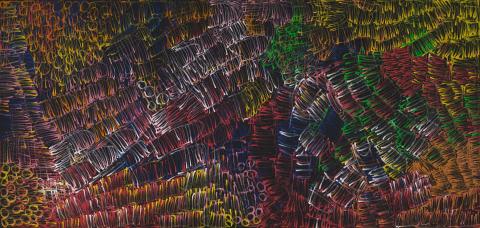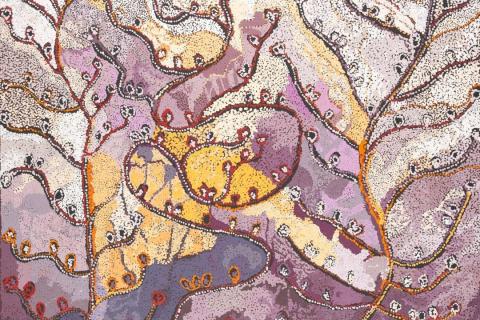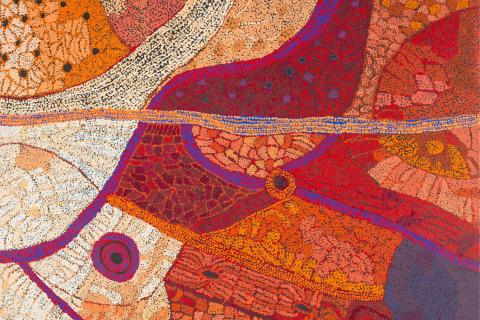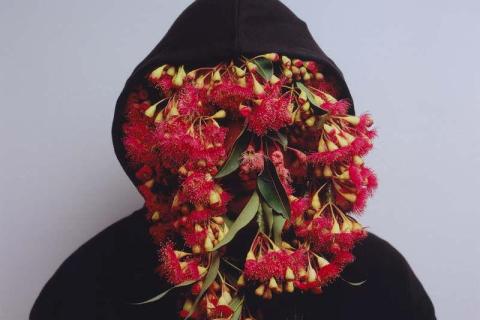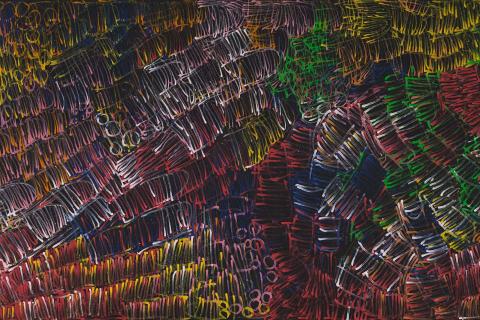Seasons and songlines
‘Seeds and Sovereignty’
A fusion of Law and ecology that connects people across vast regions of the continent, Songlines are the journey paths along which creator-ancestors travelled to bring Country into being.1 Expressed in songs, dances, rituals and art, they are containers of essential knowledge of the world, including a multitude of lessons on plant foods and medicines — and their seasonal rhythms.

In the dazzling and celebratory Awelye Atnwengerrp (Women’s ceremony from the Atnwengerrp), Utopia artist Minnie Pwerle brings to life the Tjukurpa (Dreaming stories) of the increasingly rare bush melon, found only in Atnwengerrp. Here, melon shapes are intertwined with patterns that represent the Awelye designs painted on women’s upper bodies during Atnwengerrp ceremonies that honour bush food. Kunmanara Williamson and Mrs Burton’s Punu depicts the ultukunpa or kaliny-kalinypa (Honey Grevillea) Tjukurpa from their Country near Irrunytju in Western Australia. The meandering leaves and branches mimic and overlay ancestral journey lines, solidifying the significance of this delicacy.

Punu 2011
- MRS BURTON - Artist
- WILLIAMSON, Kunmanara - Artist

Mili and yunga 2022
- CREEK, Sonya - Creator
Amongst a series of prints depicting important food plants from diverse regions of the country, Torres Strait artists Solomon Booth and Matilda Nona each represent the interconnectedness of plants within the rhythms of seasonal signs and ritual practice.
Cape York artists Sonya Creek and Mavis Ngallametta both work with natural pigments in energetic works that revel in the landscape and the botanical food and medicine within it, while Hermannsburg Potter Rona Rubuntja’s ‘Bush tucker’ series of decorated pots from the famous Arrernte collective demonstrates the ongoing importance of these regional native foods. For these artists,
these are not just foods: they are bound up in stories of creation, in kinship, and in multiple layers of personal and collective memory . . . bushfoods are an inseparable part of themselves.2
Endnotes
- Bill Gammage and Bruce Pascoe, Country: Future Fire, Future Farming, ed. Margo Neale, Thames & Hudson Australia, Victoria, 2021, p.86.
- P Yates, ‘The Bush Foods industry …’, Dialogue, vol.28, no.2, 2009, pp.49–50, in Bill Gammage, The Biggest Estate on Earth: How Aborigines Made Australia, Allen & Unwin, NSW, 2011, p.129.
Digital story context and navigation
SEEDS AND SOVEREIGNTYExplore the story

